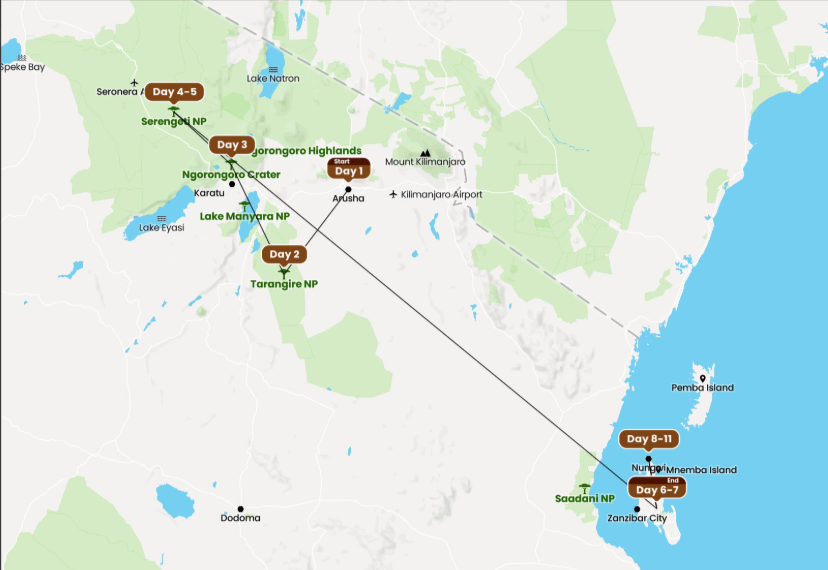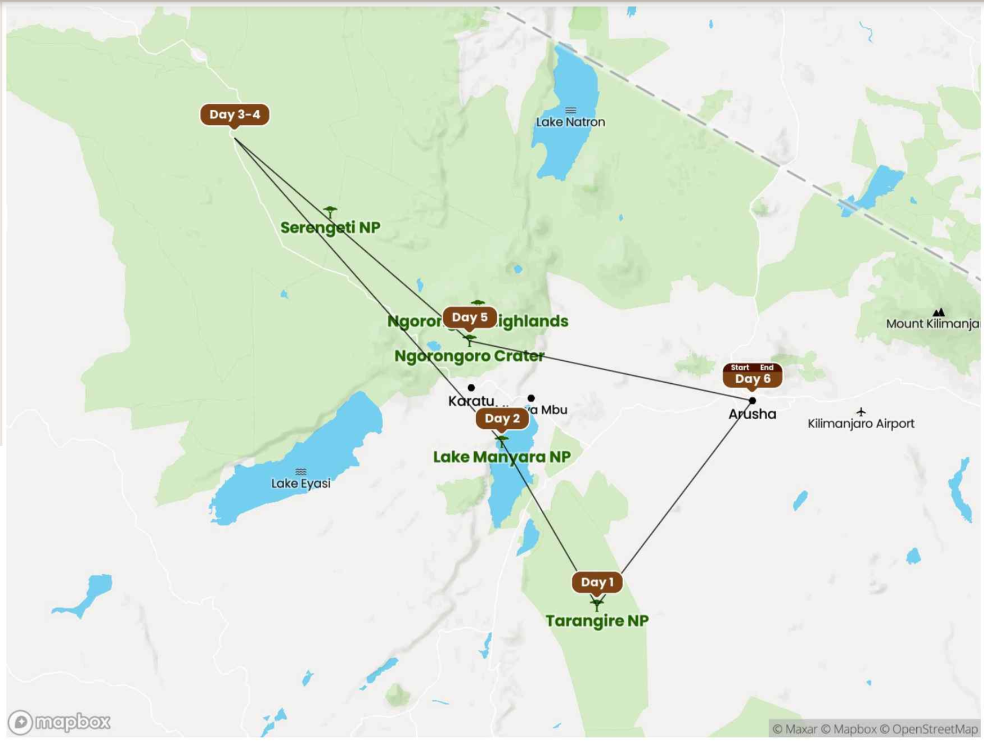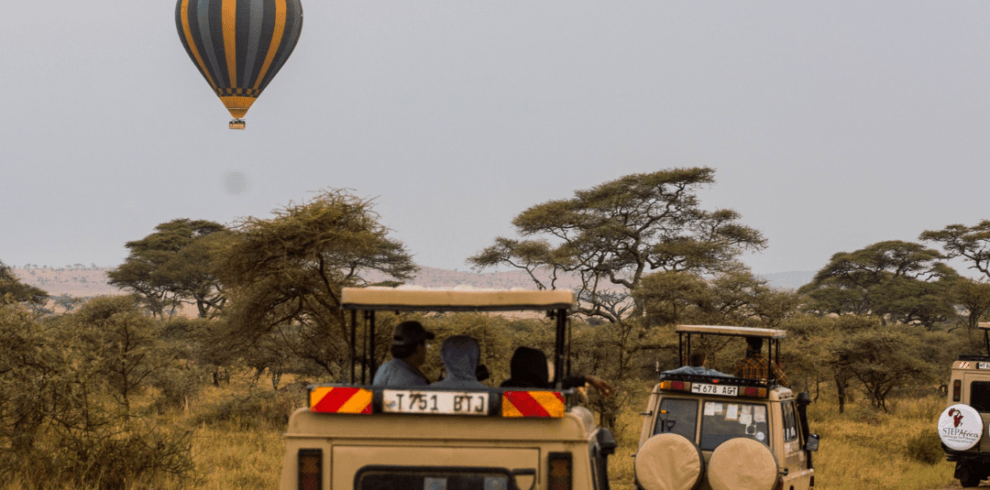- 2
- 1
- 6
- 4




The Ngorongoro Conservation Area is a UNESCO World Heritage Site located in northern Tanzania, renowned for its breathtaking landscapes, rich biodiversity, and cultural significance. Here’s a detailed description:
Overview
– Location: Situated in the Crater Highlands of Tanzania, the Ngorongoro Conservation Area encompasses around 8,300 square kilometers (3,200 square miles) and includes the famous Ngorongoro Crater, the world’s largest intact volcanic caldera.
– Geography: The area is characterized by its dramatic landscapes, including the expansive Ngorongoro Crater, volcanic mountains, lush forests, and the vast Serengeti plains. The crater itself is approximately 610 meters (2,000 feet) deep and 260 square kilometers (100 square miles) in area.
Biodiversity
– Wildlife: Ngorongoro is home to an incredible array of wildlife, making it one of the best places for game viewing in Africa. Key species include:
– The Big Five: Lions, elephants, leopards, buffaloes, and rhinoceroses.
– Other Wildlife: Zebras, wildebeests, hyenas, and a variety of bird species, including flamingos and ostriches.
– Flora: The area boasts diverse habitats, from grassy plains and acacia woodlands to highland forests, supporting a wide range of plant life.
Cultural Heritage
– Maasai People: The Ngorongoro Conservation Area is not only a natural wonder but also a cultural heritage site. It is home to the Maasai people, who have coexisted with wildlife for centuries. The Maasai continue to graze their livestock in the area, and visitors can experience their traditional lifestyle through cultural tours.
– Historical Significance: The region is rich in archaeological history, with the nearby Olduvai Gorge being one of the most important archaeological sites in the world, where early human fossils have been discovered.
Conservation
– Sustainable Practices: The Ngorongoro Conservation Area is unique as it combines wildlife conservation with pastoral land for the Maasai people. Sustainable practices are encouraged to maintain the delicate balance between conservation efforts and the needs of the local communities.
– Management: The area is managed by the Ngorongoro Conservation Area Authority, which oversees wildlife conservation, tourism, and the cultural interests of the Maasai.
Activities and Attractions
– Game Drives: Visitors can embark on guided safari tours to spot wildlife within the crater and surrounding areas.
– Scenic Views: The viewpoint along the rim of the crater offers stunning panoramic views, making it a popular spot for photography.
– Cultural Experiences: Visitors have the opportunity to engage with the Maasai culture through village visits, traditional dances, and insights into their daily lives.
Conclusion
The Ngorongoro Conservation Area is a remarkable destination that offers a unique blend of stunning natural beauty, rich wildlife, and vibrant cultural heritage. It remains one of Africa’s premier wildlife conservation areas, attracting travelers from around the globe to experience its exceptional landscapes and diverse ecosystems.



